Need a grant for LED upgrades or
voltage optimisation? (read more)

Need a grant for LED upgrades or
voltage optimisation? (read more)



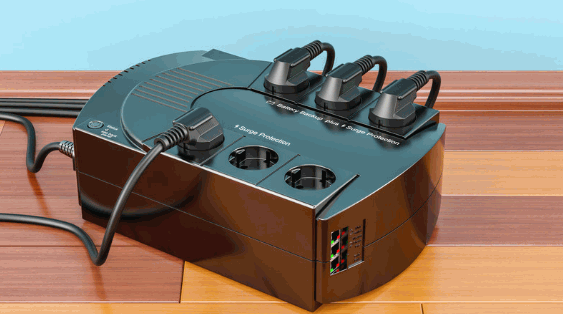
In an increasingly digital world, our reliance on electronic devices and network equipment is more profound than ever before. Whether you're a business safeguarding vital data or a homeowner protecting your precious gadgets, power disruptions can bring your world to a grinding halt. That's where an Uninterruptible Power Supply (UPS) comes into play.
In this Powervolt Team in-depth blog, we'll explore the subject thoroughly to see how they work, why they're so important, and where they can be used. We'll also look into the benefits, potential risks, and key steps to care for and maintain this essential technology.
An Uninterruptible Power Supply (UPS) is a vital electrical device that acts as a safeguard against power interruptions or fluctuations in the primary power supply. It is designed to provide a continuous and uninterrupted power source to connected electronic devices and equipment, even when the main power supply or input power source experiences disruptions.
Essentially, a UPS serves as a bridge between your sensitive electronic equipment and the grid, ensuring that your devices receive a stable and consistent power supply, regardless of external power issues. This reliability in power delivery is crucial for preventing data loss, equipment damage, and downtime in various settings, from businesses to residential environments.
Delve into: Uninterruptible Power Supply Survey
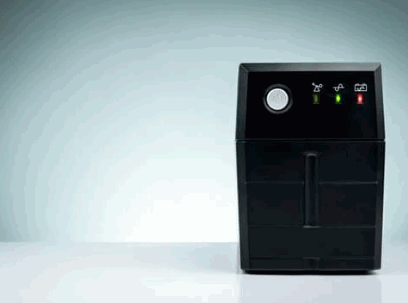
What makes a UPS system tick? Here are the main components that do all the work:
To understand this brilliant piece of technology properly, we need to break it down further and look at the different stages of operation...
The UPS is connected to the primary power source, a wall outlet, or utility power. This power source provides the initial electricity required for the operation of the UPS and charges the internal battery.
One of the primary functions of a UPS is to store electrical energy in its internal battery. While the primary power source is functioning correctly, the UPS continuously charges its battery. This ensures that the battery is fully charged and ready to provide power when the incoming utility power fails.
In a typical UPS, the primary power source (AC power) is converted into DC (Direct Current) power. This DC power is used to charge the internal battery backup. The conversion to DC power allows for efficient battery charging and maintenance.
The inverter is a critical component of a UPS. When the primary power source experiences an interruption, voltage variation, or any other issue, the inverter takes over. Its role is to kickstart the backup power circuitry and convert the DC power stored in the battery back into AC power. AC power is what most electronic devices and equipment require for operation.
A UPS often includes voltage regulation capabilities. This means that the UPS can regulate the output voltage, ensuring that the power supplied to connected equipment remains stable and within the desired range. Voltage regulation is crucial for preventing power fluctuations such as under-voltage (sags) or over-voltage (surges) from reaching connected devices.
One of the key features of a UPS is its Automatic Transfer Switch (ATS). The ATS continuously monitors the primary power source. When it detects any interruptions, fluctuations, or irregularities in the primary power supply, it quickly switches to the UPS's battery power.
The transition from primary power to UPS battery emergency power happens virtually instantaneously, typically within a few milliseconds. This seamless transition ensures that there is no disruption in power supply to the connected equipment. Users often don't even notice the change and their devices continue to operate without interruption.
Once the UPS is providing power from its battery, it continues to do so until the primary power source stabilises or until the battery is depleted. The UPS can support connected devices for a predefined period, depending on the capacity of the UPS and the power consumption of the equipment. During this time, the UPS maintains a stable output voltage and ensures that the connected devices receive a consistent power supply.
Uninterruptible power supplies actively monitor the status of their internal batteries and track the battery's charge level and condition. When the battery's charge level drops below a certain threshold, the UPS may initiate a controlled shutdown of connected equipment to prevent an abrupt loss of power.
In summary, UPS devices work by continuously monitoring the incoming power source, charging its internal battery, and seamlessly switching to battery power when disruptions in electrical power occur. This transition happens rapidly, ensuring uninterrupted power for connected electronic devices and equipment. With its ability to provide stable output voltage and prevent data loss, equipment damage, and downtime, a UPS is an indispensable tool for ensuring power continuity in various settings, from larger power consumers, like data centres, to smaller power consumers, like home offices.
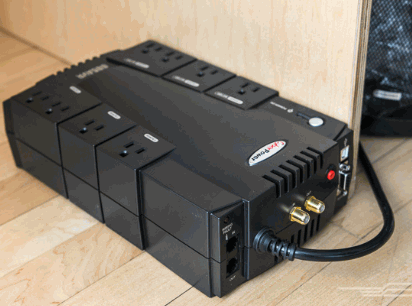
While they are used widely across a broad spectrum of industrial settings, homes, medical centres, etc., they are still a mystery to a great many people. The following examples illustrate just how they are used and how important they are:
In essence, UPS systems are essential for protecting against power failure, power spikes, and disruptions in diverse settings, ranging from business operations and data centres to residential applications and critical environments. They maintain power to ensure the continuity of operations, protect valuable data, extend the lifespan of electronic equipment, and provide peace of mind in an increasingly technology-dependent world.
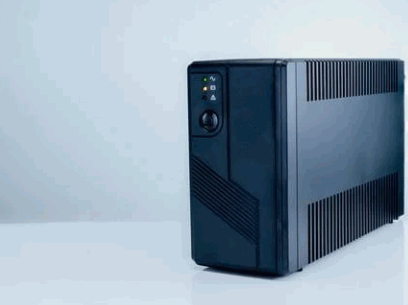
Uninterruptible Power Supply (UPS) systems come in various topologies, each with its unique design and functionality. These topologies determine how a UPS operates, its efficiency, and its suitability for specific applications. The main UPS topologies include:
Standby UPS: Standby UPS systems, also known as Offline UPS or Line-Interactive UPS, offer basic protection against power disturbances. The UPS switches to battery power when it detects a power interruption, providing a cost-effective solution with a short switchover time. They are suitable for protecting personal computers and non-critical applications where brief power disruptions can be tolerated.
Line-Interactive UPS: Line-Interactive UPS systems combine features from both Standby and Online UPS models, automatically selecting different power taps. They incorporate an automatic voltage regulator (AVR) to stabilize the output voltage, offering improved protection against voltage fluctuations and surges. Line-interactive UPS units are a good choice for safeguarding small servers, network equipment, and workstations.
Double Conversion (Online) UPS: Double Conversion UPS systems provide the highest level of power protection. These UPS units continuously convert incoming AC power to DC and then back to AC power. The result is a seamless and stable output voltage with zero transfer time, regardless of the quality of the input power. Double Conversion UPS systems are ideal for critical applications, such as data centres, where even a millisecond of downtime is unacceptable.
Delta Conversion (Delta-Conversion Online) UPS: Delta Conversion UPS is an advanced version of the Double Conversion UPS. It offers greater efficiency and improved reliability. This UPS type is suitable for data centres and critical applications where energy efficiency is a top priority.
Ferro-Resonant UPS (Constant Voltage Transformer): Ferro-Resonant UPS systems use a ferro-resonant transformer to provide voltage regulation and isolation. They offer excellent protection against voltage variations and noise. When power loss occurs, they hold enough energy to span the gap between switching from line power to battery power. However, these UPS units are less common in modern systems due to energy inefficiency and weight concerns.
Multi-Mode UPS (Economy Line-Interactive UPS): Multi-Mode UPS units are versatile and capable of operating in various modes, including Standby, Line-Interactive, and Double Conversion modes. They adapt their operation based on the quality of the incoming power, balancing protection, and efficiency. These UPS systems are suitable for a range of applications, offering flexibility in balancing power quality and efficiency.
Modular UPS: Modular UPS consists of multiple power modules that can be added or removed to scale capacity. This design provides redundancy* and makes expansion easy. Modular UPS systems are commonly used in data centres and environments where scalability and high availability are crucial.
*if one module fails, others can provide power output when voltage drops
Hybrid (Synchronous) UPS: Hybrid UPS units combine battery power with a flywheel or kinetic energy storage system. This results in high efficiency and rapid response to power disturbances. Hybrid UPS systems are used in mission-critical applications where zero downtime is essential.
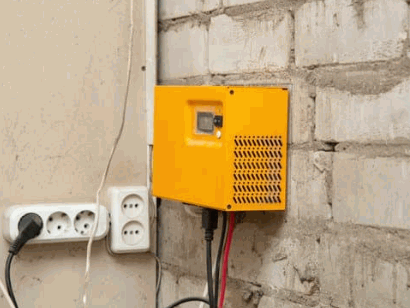
UPS systems use different types of batteries to provide backup power. The most common UPS battery types are sealed lead-acid (SLA) batteries and lithium-ion batteries.
Sealed lead-acid batteries are the traditional choice for UPS systems. They are reliable and cost-effective, making them a practical choice for many applications. These batteries come in two varieties: Valve-Regulated Lead-Acid (VRLA) and Flooded Lead-Acid. VRLA batteries are sealed and maintenance-free, making them easy to use. Flooded lead-acid batteries require periodic maintenance, including adding distilled water to keep them running smoothly.
On the other hand, lithium-ion batteries are becoming more popular due to their compact size, longer lifespan, and faster charging capabilities. They are especially beneficial for UPS systems in smaller spaces where size is a consideration. Lithium-ion batteries also have a longer lifespan and require less maintenance. However, they tend to be more expensive than sealed lead-acid batteries, a factor to consider when choosing the right battery type for your specific needs.
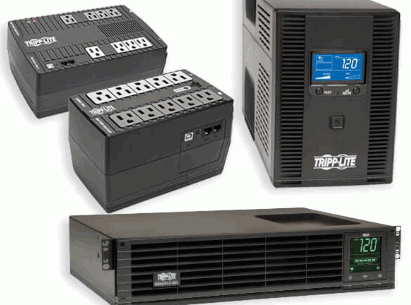
Power factor correction (PFC) plays a vital role in the context of Uninterruptible Power Supply (UPS) systems. It primarily focuses on enhancing energy efficiency, reducing electricity costs, and ensuring reliable UPS performance. UPS units equipped with active power factor correction (active PFC) are designed to minimize the consumption of reactive power, which can strain the power distribution system. By reducing reactive power, these UPS systems become more energy-efficient, resulting in lower electricity bills.
Moreover, UPS systems with power factor correction are compatible with modern IT equipment, making them ideal for applications such as data centres. They generate less heat, leading to prolonged component lifespan and potential savings in cooling costs. Power factor correction also allows for more precise UPS sizing, potentially reducing the physical footprint and upfront expenses. In essence, power factor correction in UPS systems not only improves their own performance but also contributes to sustainable and cost-effective power management, benefiting a wide range of applications.
Discover: What Is Power Factor Correction?

We've covered the subject pretty well, but here are some of the most commonly asked questions we get here at Powervolt Team:
Q. What is the typical battery life?
A. The lifespan of UPS batteries can vary but generally ranges from 3 to 5 years. Factors such as usage patterns and environmental conditions can impact battery longevity.
Q. Can a UPS protect against all power-related issues, including lightning strikes?
A. While UPS systems provide excellent protection against most power disturbances, they may not safeguard against direct lightning strikes. However, surge protectors and lightning arrestors can be used in conjunction with UPS systems for enhanced protection.
Q. How long can a UPS provide power during an outage?
A. The backup runtime of a UPS depends on its capacity and the power load it needs to support. Smaller UPS units may offer minutes of backup power, while larger systems can provide hours of backup. It's essential to assess your specific needs and choose a UPS with an appropriate runtime.
Q. Do UPS systems require regular maintenance?
A. Yes, UPS systems benefit from regular maintenance. This may include battery replacement, firmware updates, and occasional load testing. Proper maintenance helps ensure that the UPS functions optimally when needed.
Q. Can a UPS be used with any electronic device?
A. UPS systems can be used with a wide range of electronic devices, from computer systems and servers to home entertainment systems. However, it's crucial to size the UPS appropriately for the connected equipment to ensure it can provide adequate backup power during an outage.
While it's a technical subject, we can sum up the usefulness of uninterruptible power supply systems in two ways:
Although this could risk oversimplifying the issue, it captures their importance very well. All the rest is helpful to know and backs up the facts, but the main points are clear: UPS systems are not only handy, they are essential. As we increase our reliance on electrical equipment and gadgets of all kinds, with entire households, businesses, and commercial properties operated by electrical systems (including AI), UPS will play a bigger role in the time to come.
While it's not hugely important to understand all the intricate technical details, it does help to know the basics and understand how important UPS systems are.
This blog lays out the basic facts, although there's more to the subject than we could reasonably provide here without stretching it too far. If you have learned something, that's great! But if you need more information or you want to arrange for a high-quality UPS system for your home, business, public building, or medical centre, Powervolt Team is here, waiting for your call!